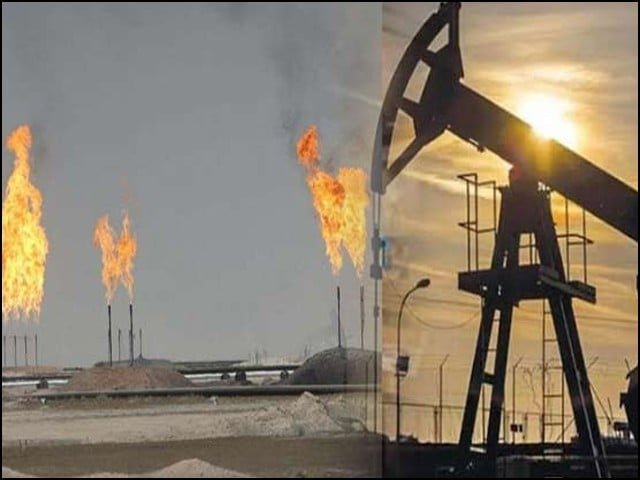These questions are often asked: “Is there oil in Pakistan?” Has it come out of any well yet? Why are Pakistani companies not looking for oil? What is the reason for extracting oil in Balochistan? Iran is full of oil, then why are we not drilling in Baluchistan adjacent to it or is there any international pressure not to explore there? Is there oil and gas in Sindh too?
These questions are not only a reflection of the national interest, but perhaps the desire to become rich like the Arab countries is also hidden behind them and the hope of improving their socio-economic conditions is also reflected.
These inquiries are perfectly legitimate, and people have the right to raise questions about the affairs of their country and seek accurate information from experts so that no misunderstandings arise. As non-standard information is often spread in our country, in the same way, public awareness regarding oil and gas is necessary so that they understand the facts.
Early exploration and discoveries of oil and gas in Sindh
At the end of the nineteenth century, when the British Raj was ruling India and Sindh was part of it, the British government established the Geological Survey of India in 1851. Then the geological structure and mineral resources of Sindh were also studied. Amazingly, they also drilled the first experimental well near Sukkur around 1891, which proves that the land of Sindh has been significant for oil and gas deposits since the beginning. And that is why the experts chose this place.
Recently, a new gas reservoir Akhiro One has been discovered in Khairpur district, the news of which also made headlines. Pakistan’s major gas fields are located in the northern districts of Sindh such as Ghotki, Sukkur, Jacobabad, Shikarpur and Khairpur. These include fields like Mari, Kadirpur, Kadanwari, and Sawan. While most of the oil deposits have been discovered in South Sindh, particularly in Badin, Sanghar and Mirpurkhas. Among which prominent names are Khaskheli, Truck, Gularchi, Tandoadam Kannada, and Bobby etc.
Sindh: Oil and gas hub
Sindh has 351 oil and gas reserves in Pakistan, making it the country’s largest producing province. It would not be an exaggeration if I say that Sindh has the potential to become the Texas of Pakistan. Or let’s say that Sindh is the Arabia of our country. It should be kept in mind that the oil and gas discoveries that are being made now, their reserves are very small and many of the discoveries are economically unprofitable.
However, it is a matter of thinking why the wealth of oil did not lead to the prosperity of the people in Sindh like Arab countries. Did we spend the income of these resources on public welfare? Companies operating in Sindh are bound by Pakistani laws to spend a certain amount on welfare activities and they certainly do, such as setting up educational centers or building health centers, but when and how do these initiatives work for the common man. will improve their lives, that is a different topic.
History of oil and gas exploration in Sindh
Oil and gas exploration in Sindh was started with an experimental well near Sukkur. Then in 1925 the Burma Oil Company drilled another well near Khairpur. While a well was also dug in 1939 near the present Karsaz named Drug Road-1 in Karachi city, but complete information about all these initial efforts is not available. But it is certain that there was no success.
In 1948, Burma Oil drilled the first five oil and gas wells at Badin, thirty kilometers northwest of Hyderabad, at Lakhra, and Standard Vacuum, an American company, from 1956 to 1961. Although the first five wells failed, the geological and engineering information gained from these wells proved to be very useful, and proved to be a precursor to future success.
Another American company, Esso, discovered Sindh’s largest gas field in 1956, Mari, located in District Ghotki, which is still a major gas production center today. Two more large gas fields, Kandhkot and Qadirpur, were also discovered in northern Sindh. In 1981, an American company, Union Texas, drilled a well called Khaskheli One, which reached a depth of 8,529 feet, and for the first time, large oil deposits were discovered in Sindh.
A wonderful example of public welfare
It is important to mention here that Malaysia’s national oil company “Petronas” has established a grand university with its income, where not only Malaysian students but students from more than one hundred and fifty countries of the world would get knowledge. are, where apart from science and technology, sciences related to oil and gas exploration are taught. Many students from Pakistan are also studying in this university. I wish such examples were established in Pakistan as well, especially in Sindh, which is the most important region of the country in terms of oil and gas.
Future of Sindh
There is a possible similarity between Sindh and the American state of Texas, which is famous worldwide for its oil and gas, and it can be hoped that the people of Texas in the United States will be prosperous and prosperous, and will grow exponentially. Thanks to one of the richest regions of America, the people of Sindh will also be prosperous one day or the other.
Gas exploration in Karachi
This news will also be of interest to the readers that Karachi has also been the first center of oil and gas exploration. Two wells named Karachi-1 in 1956 and Karachi-2 in 1959 were also dug in the Hill Park and Kidney Hill areas of Karachi, but no substantial amount was recovered from there.








